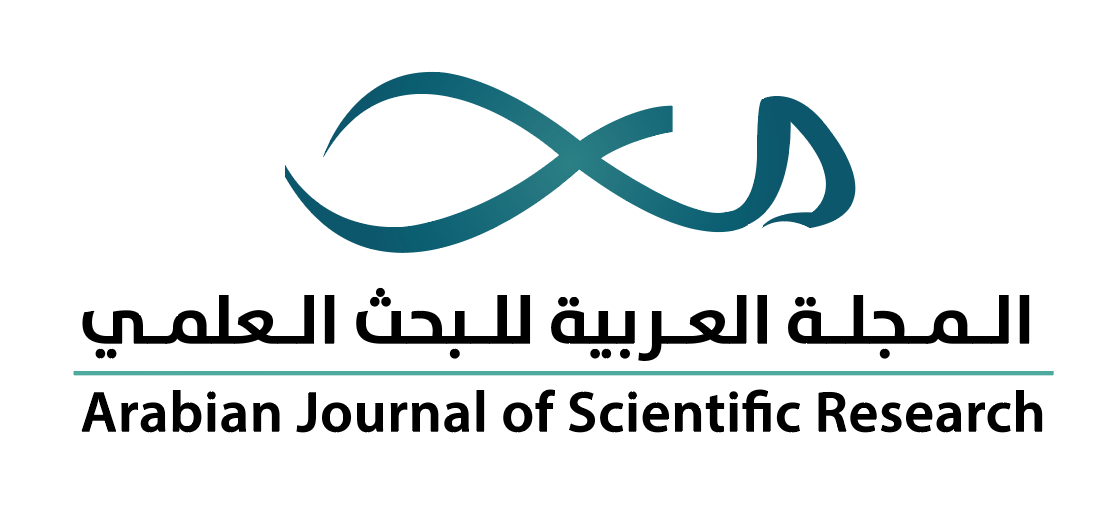-
oa تقدير مخاطر استخدام أسلحة اليورانيوم المنضّب في العراق - الجزء الأول
- Source: Arabian Journal of Scientific Research-المجلة العربية للبحث العلمي, Volume 1 (2020), Issue 1, Feb 2020, 3
-
- 25 September 2019
- 12 November 2019
- 28 February 2020
Abstract
الملخص
خلال حرب الخليج الأولى في عام 1991، وطوال العمليات العسكرية لاحتلال العراق في عام 2003، استخدمت القوات المسلحة الأمريكية والبريطانية ذخائر اليورانيوم المنضّب في مناطق مأهولة بالسكان، خاصة في جنوب العراق؛ ما أدى إلى تلوث المنطقة بالمواد المشعة.
أُجريت دراسة تقييم المخاطر الصحية لمنطقة مكتظة بالسكان تبلغ مساحتها نحو 1200 كم2، وتشمل مدن صفوان والزبير وغرب البصرة، والتي تعرضت لجرعات إشعاعية عالية بسبب تلوث اليورانيوم المنضب. أوضحت نتائج هذه الدراسة أن أهم مصدر للتعرض الإشعاعي في منطقة الدراسة هو استنشاق هباء اليورانيوم المنضّب وأكاسيده خلال الأشهر الأولى من العمليات العسكرية لعام 1991. ووُجد أن قيمة الجرعات السنوية الفعالة الناتجة من هذا المسار بلغت 435 ملّي سيفَرت تعرّضت لها القوات المسلحة العراقية في هذه المنطقة، وقرابة 167 ملّي سيفَرت تعرّض لها السكان في مدينة صفوان. كما بلغ إجمالي الجرعة الفعالة السنوية التي تعرض لها السكان في مدينتي الزبير وغرب البصرة بحدود 268.6 ملّي سيفَرت.
أما ثاني أعلى جرعة إشعاعية فعالة فقد نتجت من إعادة تعلّق وانبعاث اليورانيوم المنضّب وأكاسيده ونويدات سلسلة انحلاله من الدبابات المدمرة والتربة وغيرها من مواقع الآليات العسكرية المدمرة جنوب وغرب البصرة والناصرية؛ حيث مع كل عاصفة رملية وترابية، ظل السكان في هذه المناطق يتلقون جرعات إضافية من المناطق الملوثة باليورانيوم المنضّب؛ أي إن سكان منطقة الدراسة تعرّضوا لجرعات إشعاعية تصل قيمتها إلى نحو 200 مرة أعلى من الجرعة الإشعاعية السنوية التي يتلقاها أي شخص من مكان طبيعي في معظم أنحاء العالم، والتي لا تتجاوز 2.4 ملّي سيفَرت.
يشير التقييم أيضًا إلى أن قيم الجرعة السنوية الفعالة الناتجة من استنشاق هباء وأكاسيد اليورانيوم والنويدات المشعة التي يُعاد تعلّقها في الجو تبلغ نحو 90% من إجمالي الجرعة التي تشمل جميع المسارات الأخرى؛ أي إن الجرعات الناتجة من هضم الأغذية الملوثة والتعرّض لسحابة خارجية من اليورانيوم ونويدات الرادون تمثل أقل من 10% من إجمالي الجرعة الفعالة السنوية. في حين بلغ إجمالي الجرعة التراكمية للفترة 1991-1996 نحو 913.7 ملّي سيفَرت لمنطقة صفوان، و515 ملّي سيفَرت لمدينة الزبير وغرب مدينة البصرة.
During Gulf War 1 in 1991, and throughout the occupation of Iraq military operations in 2003, US and UK armed forces used Depleted Uranium (DU) radioactive munitions in populated residential areas specially in southern Iraq.
In this article, results of 1991-war risk assessment in a highly populated area of about 1200 km2 including the cities of Safwan, Zubair and west of Basra are presented. Residents of these areas were exposed to high radioactive doses due to DU contamination.
Results indicated that the most important source of exposure was the inhalation of uranium and its oxides aerosols during first months of the military operations of 1991. The calculated effective annual doses from this path were found to be 435 mSv for the armed forces and 167 mSv for the population in the city of Safwan. The annual whole body effective dose the population of Zubair and western Basra city were exposed to is 268.6 mSv. The second highest effective radiation dose resulted from inhalation of resuspension-emanation of (DU) radionuclides and oxides from destroyed tanks and other military artilleries sites. With each dust and sandstorm, the population in these areas kept receiving extra doses from DU pollution. Residents of the study area have been exposed to 200 times the annual radiation dose any person would receive from the natural background in most parts of the world, which is only 2.4 mSv.
The assessment also indicates that 90% of total annual effective dose values are resulting from the inhalation of uranium oxides and resuspended radionuclides pathways. Doses from all other pathways account for less than 10% of the total annual effective dose. The total cumulative dose the residents received through the period 1991-1996 was about 913.7 mSv for Safwan city, and 515 mSv for each Zubair and west of Basra cities.


